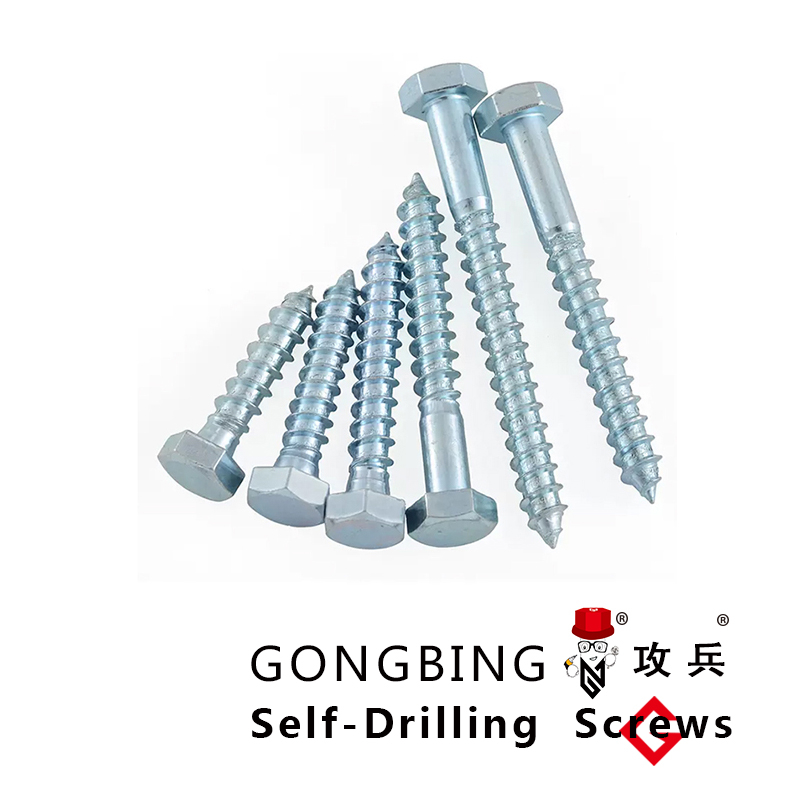nylon head self drilling screws
Self-drilling screws are indispensable fasteners in various construction, manufacturing, and engineering projects. With an ever-growing market demand, understanding the different types of self-drilling screws can significantly impact your project's effectiveness, efficiency, and durability. Here, we delve into the distinct categories of self-drilling screws, coupled with insightful advice from industry experts to help you make informed decisions.

Self-drilling screws, also known as Tek screws, are designed to drill their own holes into materials like metal and wood. The convenience they offer by eliminating the need for pilot holes is unparalleled, making them ideal for projects where precision and time management are critical.
Firstly, the most commonly used type is the hex washer head self-drilling screw. Known for its robust design, the hex washer head provides excellent clamping strength, making it suitable for heavy-duty applications requiring additional torque. The washer under the head increases the bearing surface, ensuring the screw remains in position under extreme conditions. Construction professionals often rely on these screws for roofing and metal framing where reliability is paramount.

Another popular choice is the pan head self-drilling screw. Featuring a flat top and a rounded head, pan head screws are typically employed in situations requiring lower profile fasteners for aesthetic or clearance purposes. This type of screw is often employed in HVAC ductwork where a smoother surface minimizes air resistance and improves energy efficiency.
The third key type is the flat head self-drilling screw. Designed to sit flush with the material's surface, flat head screws are perfect for applications demanding a sleek finish. These are commonly used in carpentry and joinery where visual appeal is essential. The flat head design is also excellent for countersinking, ensuring they do not protrude or snag.
types of self drilling screws
An equally important variant is the modified truss head self-drilling screw. This type features a low-profile head with an extra-wide round bearing surface, making it ideal for fastening thin metal without damaging the material. Experts recommend these screws for applications like metal studs in framing and thin sheet metal assemblies, where minimum surface pressure is crucial.
Finally, specialty self-drilling screws, such as winged drill screws, deserve mention. These screws are tailored for applications involving composite materials over metallic surfaces. The 'wings' on these screws widen the drill hole in the composite material, preventing it from breaking or cracking and then snap off as the screw penetrates the metal layer.
Authority in the fastener industry points out that selecting the right self-drilling screw depends on understanding the material thickness, environmental conditions, and the required finish. Trusted brands in the market often provide operational guides with specifications including drill capacity and head types to assist users in the selection process.
In conclusion, while the choice of self-drilling screws can appear overwhelming, assessing your project needs and consulting with manufacturers or seasoned professionals can ensure optimal results. Always consider the material, application, environmental constraints, and aesthetic requirements when selecting these fasteners. By doing so, you leverage both the expertise and experienced insights available, aligning with best practices in the field and securing a trustworthy outcome for any project involving self-drilling screws.
-
Weatherproof Plastic Expansion Anchors for OutdoorLabaraiJun.06,2025
-
Sustainability in the Supply Chain: Eco-Friendly TEK Screws ProductionLabaraiJun.06,2025
-
Load-Bearing Capacity of External Insulation FixingsLabaraiJun.06,2025
-
Double Head Bolts: Enhancing Efficiency in Industrial MachineryLabaraiJun.06,2025
-
Corrosion Resistance in Chipboard Screws: Coatings for Wholesale DurabilityLabaraiJun.06,2025
-
Butterfly Toggle Bolts : Enhancing Structural ResilienceLabaraiJun.06,2025
